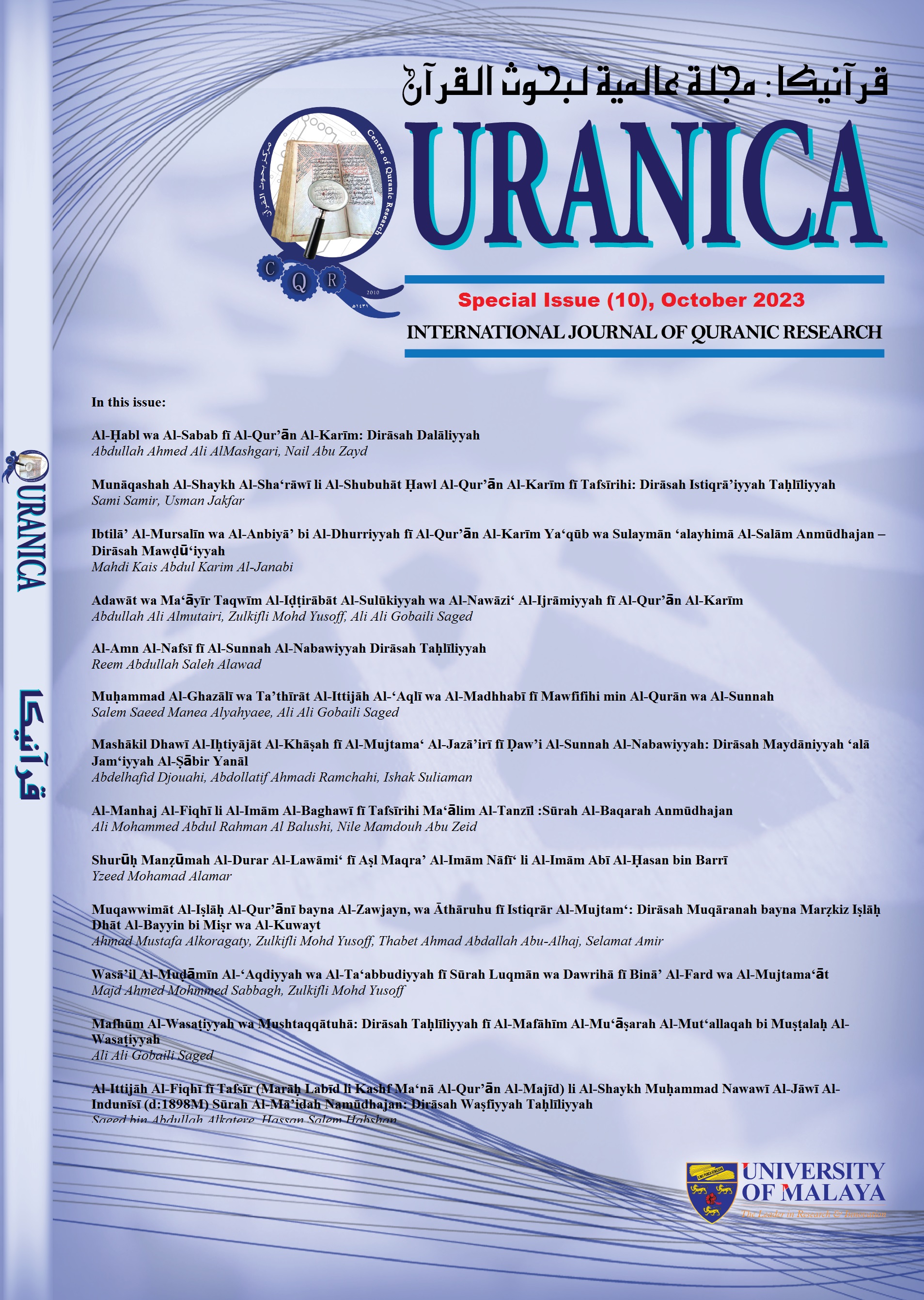Muqawwimāt Al-Iṣlāḥ Al-Qur’ānī bayna Al-Zawjayn, wa Āthāruhu fī Istiqrār Al-Mujtam‘: Dirāsah Muqāranah bayna Marẓkiz Iṣlāḥ Dhāt Al-Bayyin bi Miṣr wa Al-Kuwayt
Main Article Content
Abstract
The research seeks to uncover the causes of marital disputes as recorded by centers of reconciliation in Egypt and Kuwait, identify ways to address them, and compare the centers’ practices with the Quran's reform practices. It also aims to propose raising the efficiency of the centers’ reform practices. The research is influenced by a critical paradigm; where it adopts a descriptive analytical method to analyze the arbitrators’ views about these disputes, which were collected through semi-structured interviews. The collected qualitative data are thematically analyzed to identify the similarities and differences between the centers’ practices and compare them to the Quran’s practices. It turned out that the disputes presented to the centers were all anticipated and dealt with by the Quran. The research presented a proposal to improve the centers’ reform practices and increase their effectiveness to meet the Quran’s reform practices. The research emphasized the need for development through using advanced technology. It recommended introducing the preparation of a “family arbitrator” as a specialty in Islamic colleges and enhancing the marketing services provided by the centers. The study derives its value from the great value that Islam gave to reforming the relationship between spouses.
Downloads
Article Details
Disclaimer
QURANICA makes every effort to ensure the accuracy of all its contents. However, opinions, discussions, views and recommendations are expressed in this journal do not necessarily reflect the official policy of QURANICA or views of its editors or publishers. Therefore, QURANICA and its publishers will not be liable for any controversy may be arisen. The journal reserves the right, at its sole discretion, to change its terms and conditions of publications.
Copyright
It is a condition of publication that manuscript submitted to the journal have not been published, accepted for publication, nor simultaneously submitted for publication elsewhere. By submitting a manuscript, the author(s) agrees that copyright for the article is transferred to the publisher, if and when the manuscript is accepted for publication.
